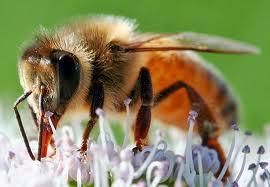Olfactory detectability of amino acids in the European honeybee (Apis mellifera)
Final thesis, Applied Ethology and Animal Biology 2011

The honeybee is one of the model species in insect olfaction. Several studies demonstrated that honeybees have an excellent ability to learn the reward value of new odors and to discriminate between odorants that are components of flower scents. The knowledge, however, about the spectrum of odorants detectable to honeybees is limited. One class of odorants that has never been tested with honeybees so far are the amino acids. This is surprising given that free amino acids are the second most abundant group of compounds in nectar (next after carbohydrates), and given that the behavior of honeybees suggests that they prefer nectar containing amino acids over solutions containing only sucrose. It is well-established that amino acids evoke specific smell sensations in vertebrates (fish, mice and primates including humans) raising the possibility that honeybees, too, might be able to perceive the odor of amino acids.
The aim of the present study was therefore to evaluate
(1) whether honeybees are able to perceive the odor of amino acids, and
(2) at what concentrations the amino acids are detectable.
Responsible for this page:
Director of undergraduate studies Biology
Last updated:
04/27/11
